A warm, dry spring turned into a cool summer. Super Saturday arrived and with great ceremony and reverence I drank a pint of Herefordshire Pale Ale outside the Miners’ Arms in Whitecroft. That was the first draught anything for me in a very long time. But while I was sipping appreciatively, I was also thinking how strangely the weather was behaving, with a rough wind blowing and black clouds overhead, occasional tiny flecks of water against my cheeks. We had these conditions for a good few days now, but proper rain never developed and the ground still looked very dry. In fact our forest ponds, at least the ones without feeder streams, were as shrunken as at the end of a long hot summer.
Over many weeks I had got used to the idea that all the rivers in our area were low and slow. It was different in central Wales though, and I read on the same day that the Tyn y Cornel Hotel (which is the hotel at the other end of Powys that rents the fishing on Tal y Llyn and keeps a boat on Llyn Bugeilyn) had flooded. And when I looked at the gauges I found that the upper Wye already had a couple of feet of flood water on it, the first really good rise in many weeks.
On the 28th July poor WH from Bristol fished the Bideford Brook and found it spoiled by dog-walkers “…who repeatedly used the stream as a thoroughfare.” WH, I know what you mean and I can only sympathise because the countryside is unusually crowded at the moment. The “silly season” is going to be a long one this year. Normally, if you visit early and particularly during the week (when I like to think that sooner or later some of us will be working again) you should have it to yourself.
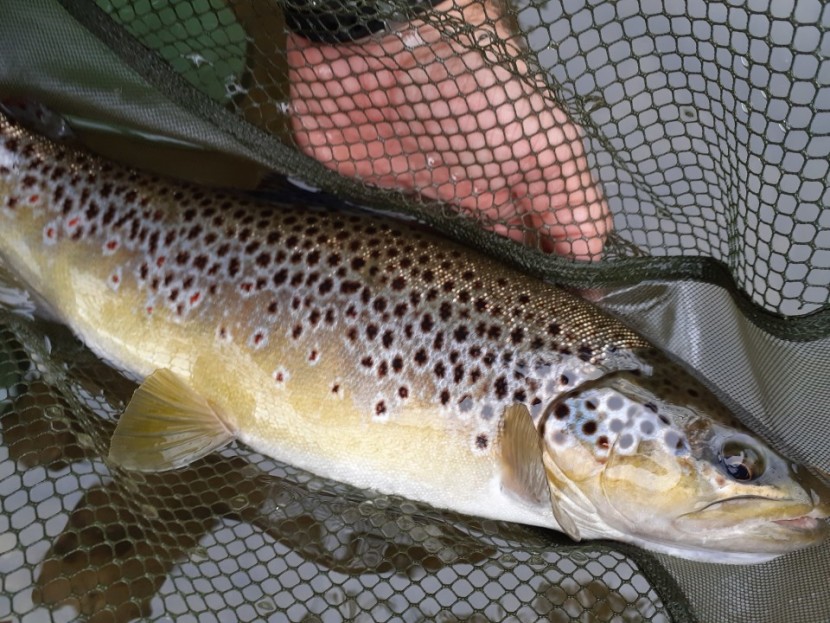 Court of Noke trout - JA from Leominster
Court of Noke trout - JA from Leominster 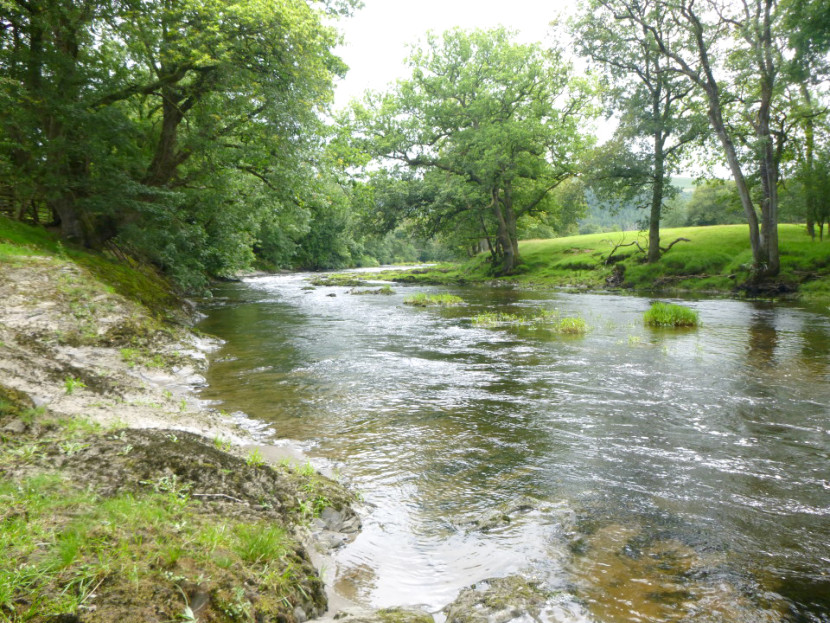 Irfon running high at Cefnllysgwynne - DR from Bristol
Irfon running high at Cefnllysgwynne - DR from Bristol TL from Kingsland fished the Arrow at Whittern on the 30th and caught 10 trout on a nymph fished under a dry fly. On the same day JH from Hereford fished at Court of Noke and reported a brace including a 2 pounder, which is a remarkable fish for the Arrow. On the 1st July another rare Usk report, this time from AD from Monmouth who fished during the evening at Old Clytha and took a brace, including a 16 inch fish, with a CDC Emerger. The following day PL from Llanbrynmair gave us the first report this year from Llyn Bugeilyn. He lost count of the catch, but believes it was around 20 trout to 12 inches, mostly on a Bibio Hopper on the top dropper. That sounds like classic upland wet fly fishing. On the 3rd JA from Leominster had 6 trout from the Arrow at Court of Noke, including what looks from the photograph like a nice one, although unfortunately we don’t have a measurement. JM from Salcombe (that’s Jeremy Mantle who used to live at Kingsland and who has trimmed many a wild stream for us during the off-season) was back in his old haunts and managed some trout and a grayling from Lyepole. LH from Hereford fished at Court of Noke on the 5th and caught 9 trout with nymphs.
Many people seemed to have fished the Beacons reservoirs this month, with mixed results. Humans and dogs were swimming as well on warmer days. On the 5th AS from Tredegar fished Llwyn On reservoir and caught 6 rainbows with spinners and worms and sent in a photograph of a tired and friendly house martin which perched on his rod and allowed itself to be picked up. Somebody who knows more about birds than me: was this a juvenile or a very trusting adult?
That same day RAL from Treorchy also fished at Llwyn On, for a blank in his case, and had this to say about it: “Was told Wednesday that they were stocking it Friday, rebooked and wasted money and time again. Worse place I ever fished in my life…was told they didn’t stock because van broke down. NOT GOOD ENOUGH.” After reading that I did a sort of mental double take to be sure it wasn’t 1st April, but I think it must have been meant seriously. Several other reporters demanded that the stocking date be publicised in order that, as they saw it, they might get their ticket money worth of trout. It does seem that if the only way you can have an enjoyable day’s fishing is to follow the stocking lorry, you might be advised to try a less demanding sport or maybe buy your trout directly from the fish farm? Others fishing the Usk Reservoir were unhappy about the presence of small perch, which apparently interfered with their sport. Can you imagine the efforts which would be required to totally rid a large reservoir of perch?
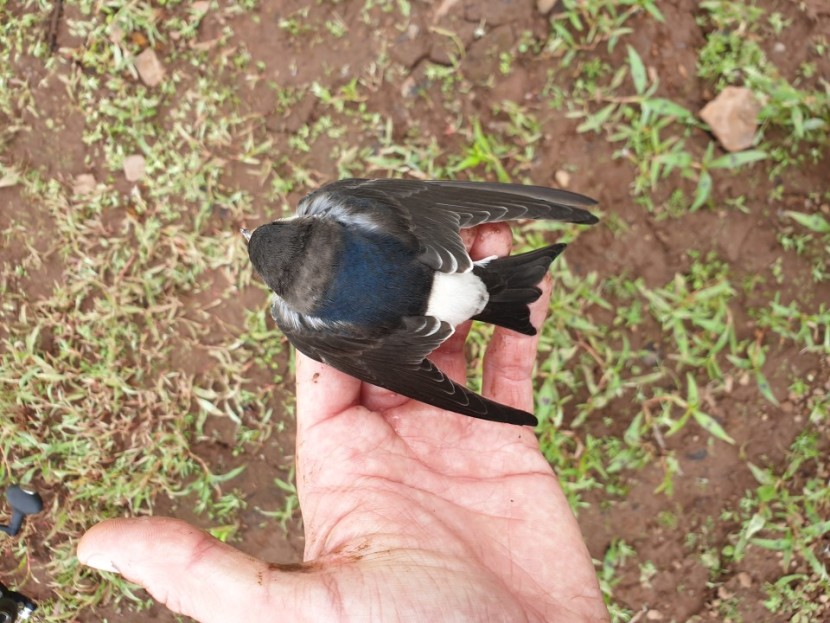 Tired martin - AS of Tredegar
Tired martin - AS of Tredegar I often read criticisms of the all methods rainbow fisheries in the Beacons, particularly regarding rubbish left on the banks, and they certainly aren’t everybody’s cup of tea. On the other hand, they give pleasure to many, especially families and young people. Many a youngster has experienced his or her first rainbow trout from them. There were also many demands this month for rubbish bins on the bank. It’s not quite that simple. That idea pre-supposes that somebody will be available to empty them on a regular basis. A more viable idea would be for all visitors including anglers to take their rubbish home with them when leaving.
TL from Kingsland enjoyed the Dore at Chanstone Court on the 6th and recorded 8 trout. JD from Bromyard fished the Lugg at Dayhouse and caught 3 trout and 3 grayling with the duo method. LT from Cardiff with a friend had 8 good trout from the Usk at Chainbridge, mainly from Usk stream. CT from Cardiff with a friend fished at Llantarnam Abbey to catch 10 trout to 1 pound, but was disappointed to report unsympathetic landscaping of the banks in the centre of the beat. VT from Haverford West with a couple of friends visited Pond Glandwgan (Aberystwyth AA) and returned 15 trout to 3 pounds.
It was raining properly by now and the main rivers began to rise, so that we began to hear reports of salmon here and there. Alan Shufflebotham, who is 90 now and still fishing hard, was one of a number of successful anglers at Wyesham. Bigsweir reported a giant sea-liced fish of 45 inches. Tim Hughes from Brecon had a 12 pounder at Wyastone Leys and his photograph makes it clear just what an impressive creature an “average” Wye salmon is. My friend Adrian, committee member of our Pontardulais club, reported a 15 pound salmon from the Loughor, which is certainly one to remember. Another fine fresh fish of 16-18 pounds was taken with the fly from the Towy at Llandeilo and Swan Meadow reported one from the Usk. My business up and down the Wye got me some sightings of salmon moving here and there: a large fish in Hom Stream near Ross and a small one up at Gromaine. On the upper river Glanusk and Nyth and Tyrcelyn reported fish.
This was when everything changed. We had received some proper rain at last to refresh the waters. More importantly the receding of the subsequent brief flood coincided with the opening of Wales and the Great Rush Back of anglers to the Welsh rivers. Suddenly we had a plethora of reports to look at! It was interesting that the Usk in particular, usually rather past its best by the time we get into July, now fished very well indeed for trout. I put this down to the fact that along with other Welsh streams it had been lying fallow without fishing attention for most of the spring, the high water had flushed it out, and the weather now continued to be cool and cloudy.
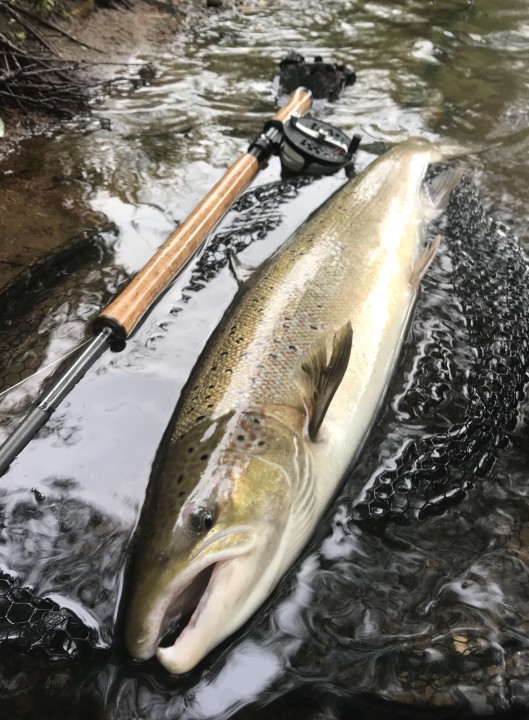 12 pounds Wye salmon for Tim Hughes
12 pounds Wye salmon for Tim Hughes 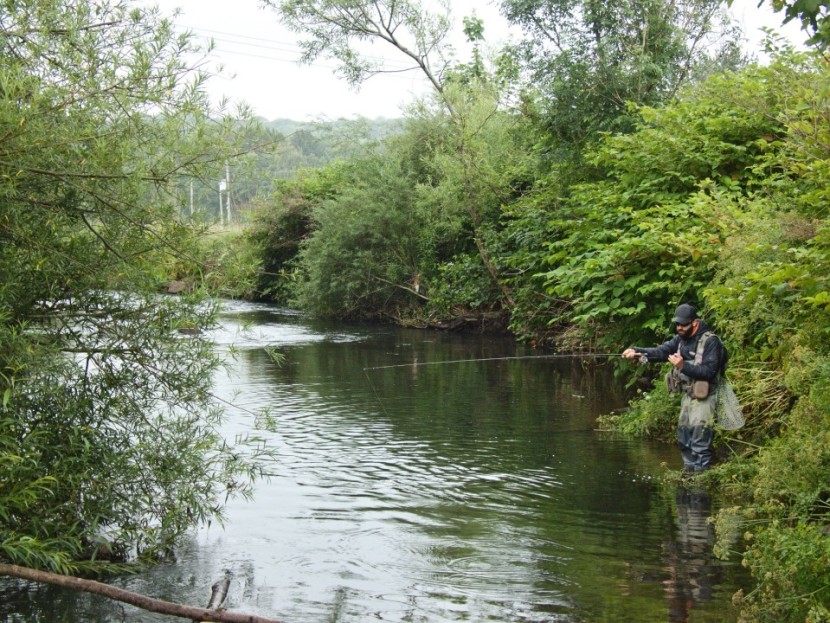 Llantarnam Abbey - CT from Cardiff
Llantarnam Abbey - CT from Cardiff 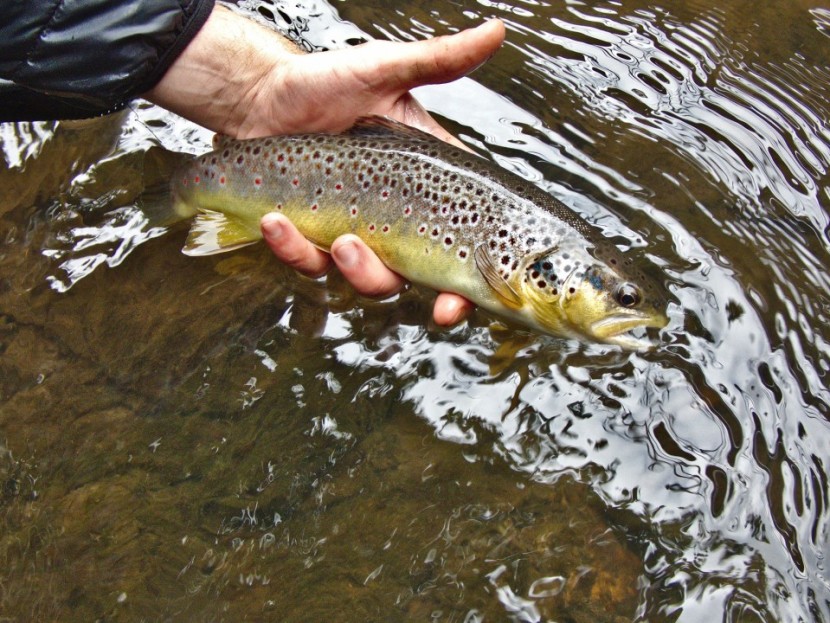 Llantarnam trout - CT from Cardiff
Llantarnam trout - CT from Cardiff On the 10th CT with Cardiff with a friend fished the Honddu at Lower Stanton for 20 trout up to 1 pound: “…one of the best small trout streams in Wales.” CJ from Malvern visited the top of the Wye at Ty Mawr had a catch of 4 trout including a superb fish of 20 inches, and another not measured but apparently also very large. RP from Didcot on the Usk at Glanusk Ty Mawr / Canal and Rivers Trust reported another large trout, not measured, in a brace caught. CT from Cardiff also reported on three short visits to Talybont Reservoir, during which 28 fish were taken. He gave the very good advice to visit this water very early in the morning or late in the evening when light levels are low and good fish come close inshore…but not to waste your time through the middle of the day, unless, perchance, the day is dull with a soft light and a breeze to ripple the surface.
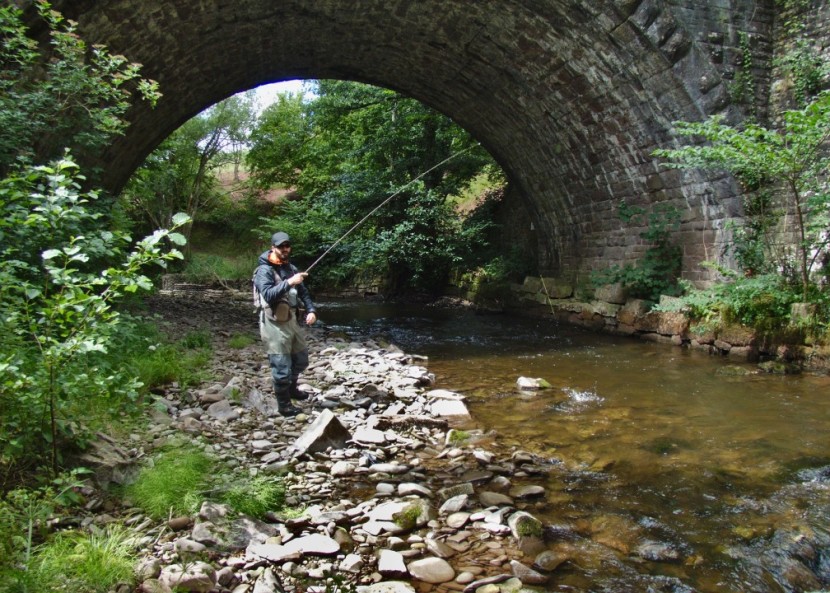 Honddu at Lower Stanton - CT from Cardiff
Honddu at Lower Stanton - CT from Cardiff 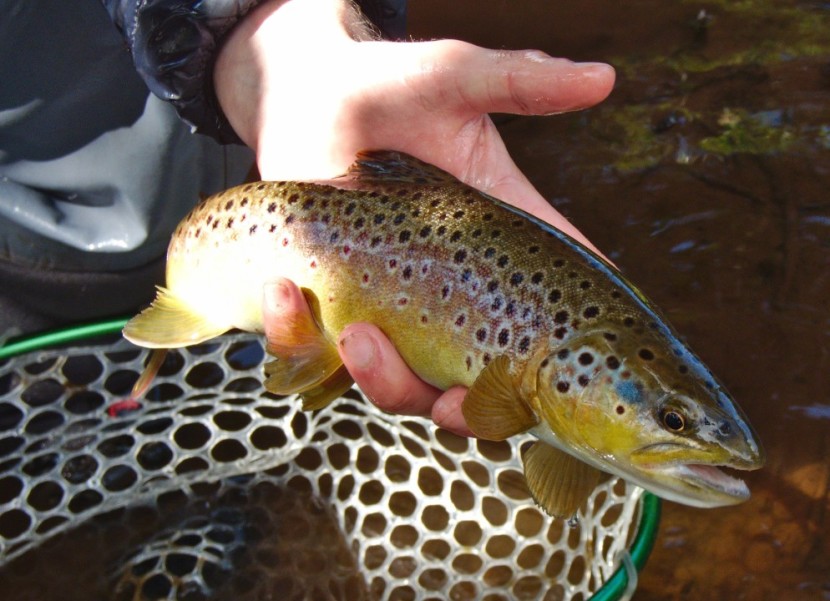 Honddu trout - CT from Cardiff
Honddu trout - CT from Cardiff Seth from the Foundation with a friend fished at Abercynrig on the 11th and they had 10 Usk trout to 1.5 pounds. MN from Bristol fished the Wye at Doldowlod for 5 trout and 7 grayling to 16 inches, mostly on nymphs. JD from Bromyard drove up into the hills to fish Llyn Bugeilyn for a dozen trout and enjoyed his surroundings: “…complete silence other than sky larks, a pair of cronking ravens and the sheep…saw a hen harrier on the way out too.” Further still into Wales, JP from St Davids reported 15 trout from the Rheidol’s Aberystwyth AA’s water. KL from Bristol had 7 trout to 13 inches fishing the duo method on the Lower Grwyne Fawr. AS of Newent had 13 trout to 13 inches from the Usk at Penpont and saw no less than three otters. There have been a lot of day-time sightings of otters this month; I dare say they have been making hay during the lock-down. DR from Bristol fished upstream at Pantyscallog and caught 12 trout to an impressive 19 inches on nymphs. JD from Hereford also used nymphs for a midday session on the Wye at Abernant, catching 5 trout and 5 grayling.
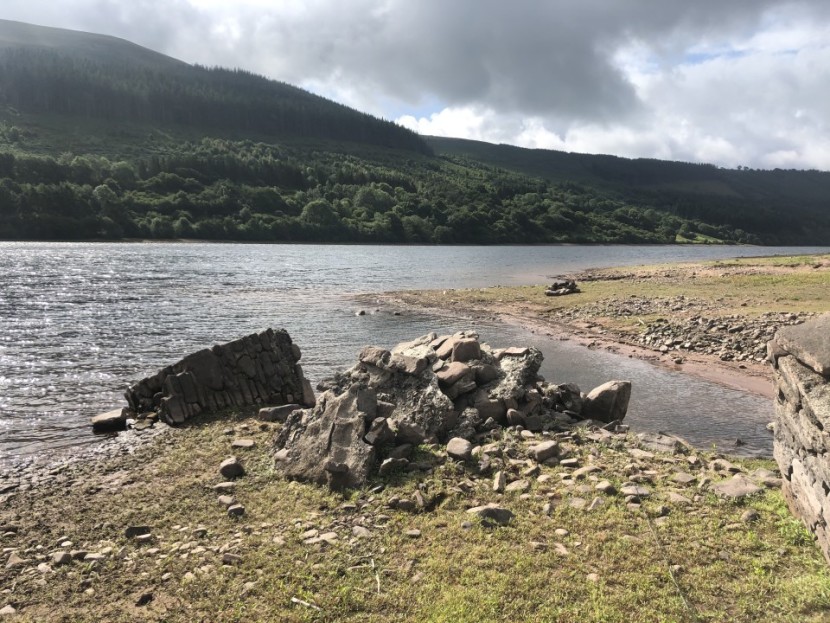 Talybont Reservoir - AJ from Bristol
Talybont Reservoir - AJ from Bristol 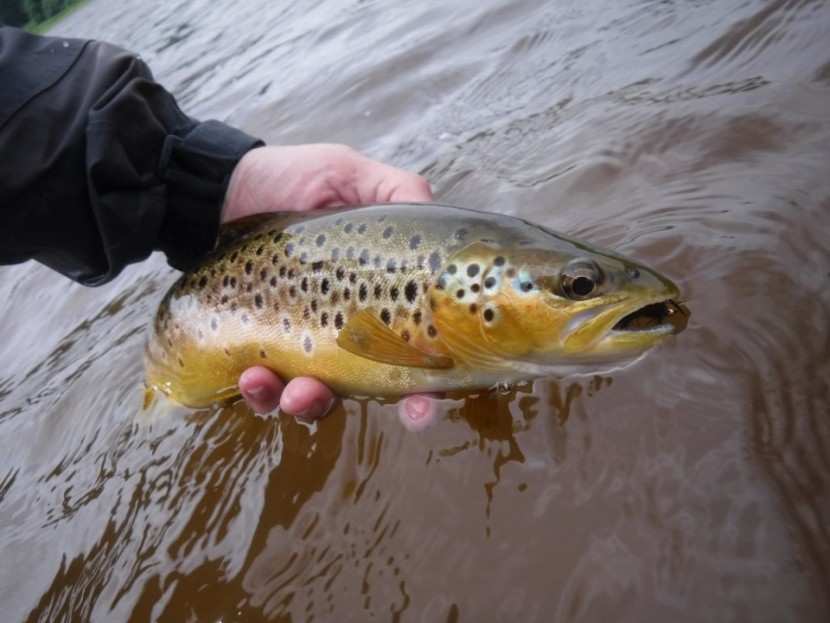 Talybont trout - CT from Cardiff
Talybont trout - CT from Cardiff On the 12th CT from Cardiff filed a report about a trip with a friend to fish the upland lakes of the Cambrian Angling Association. I think they did 4 or 5 of these llyns for 30 trout – see the report for an account of a day in the wild hills. MD from Barry, by choice a salmon angler, reported 30 trout from Ty Newydd and expressed concern about the lack of salmon parr. Personally I wouldn’t worry too much about that; my clients seem to have encountered plenty of salmon parr in the upper river this year while hoping for something more substantial!
MN from Bristol fished at Cefnllysgwynne for a big catch of trout and grayling to 16 inches on an Elk Hair Caddis. LH from Hereford had 11 trout and a grayling from the Arrow at Monkland, mostly on nymphs. SC from Llandeilo Graban had 9 trout between the Edw at Hergest and the Clettwr, both wild stream beats near his home. His report contains some detailed advice about accessing the Clettwr (a very wild stream that one) which is worth reading.
On the following day, DF from Brecon had 10 trout to 8oz from the Usk at Dinas, while DJ from Halesowen with a companion fished the Wye at Gromaine for 10 trout and 7 grayling. DR from Bristol had 17 trout to 15 inches fishing the Usk at Penpont. The following day PG from Gloucester had a bad experience on the Usk at Glan y Cafn, where his day was spoiled by persistent wild swimming from the opposite bank along with poor access maintenance on his own bank.
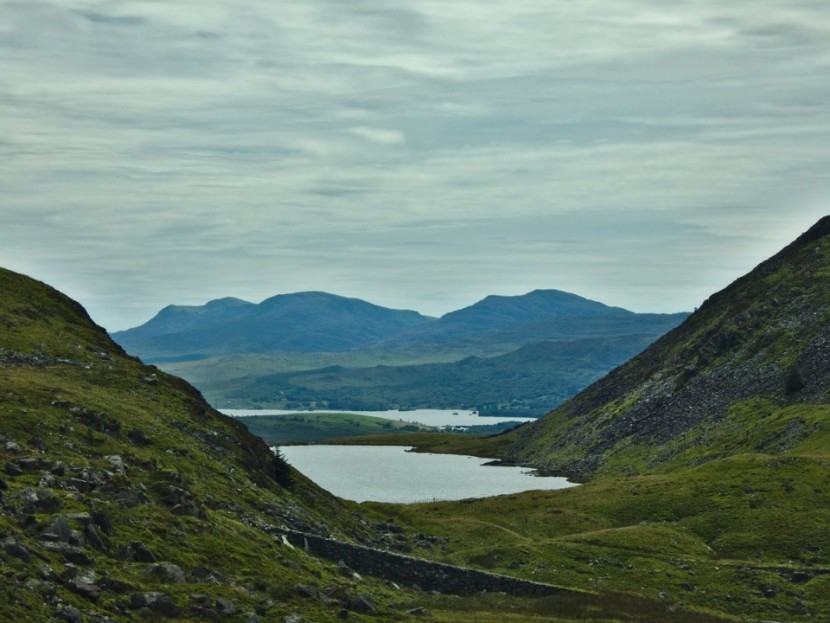 Cambrian AA waters - CT from Cardiff
Cambrian AA waters - CT from Cardiff On the subject of wild swimming, I note that there have been several radio programmes about WS lately, during much was made of how therapeutic it all is, how healthy, and how in touch with nature one feels, etc. Not a word about whether you have permission to do it or whether you might be trespassing!
On the 15th RC from Bristol caught a trout plus 5 grayling to a creditable 2 pounds from Craig Lyn. RB from Redditch had 13 Usk trout from Dinas, while from the same beat DR from Bristol had 20 trout to 16 inches on nymphs. JA from Leominster filed two reports on the 16th. One was from Claerwen, that great hill reservoir which looks almost like a sea in Central Wales (you get the tickets from Rhayader AA). On an overcast day with a good ripple he got 18 trout on traditional wets. The second was from the Edw at Hundred House, where he took 15 trout including a big one. He commented on the number of downed trees making fishing difficult at the top of the beat, along with already mentioned problems at Kington on the Arrow. I imagine we will be having a meeting sometime this autumn for those who want to get involved with wild stream beat maintenance during the winter. As every year, there will be plenty of opportunities for volunteering and if everybody living in the area would adopt just one beat it would be easy to keep them in order!
Turning to booking office beats, DA from Brecon enjoyed himself watching an otter at Ashford House on the Usk, but was one of several to complain about the access to the river there. I will concur with that; the stiles in particular having been getting worse year by year and there is a serious need for a footbridge over a side ditch in one place. OB from Crickhowell had similar complaints about Glan yr Afon, where the public path alongside the beat results in noisy interruptions to fishing on high days and holidays…and just about every other day at the moment. He also complained about the wading here, stating that it doesn’t suit a bank fisherman. To be quite fair, apart from the occasional salmon beat where you can fish from boards or spin from the bank, we should admit that bank fishing for trout and grayling is almost unknown in this part of the world. You need the chalk streams for conditions like that. For these border country WUF waters, large or small, you can reckon on having to wade. You know recently I was out with a client, the day came an end, and I pointed out the route up the bank from where it would be an easy walk across a field to the cars. “Can’t we wade back through the river,” he said. “I do so like it!”
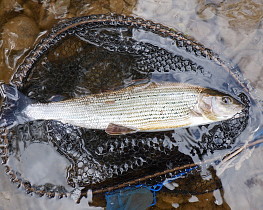 16 inch Wye grayling - DC from W Herefordshire
16 inch Wye grayling - DC from W Herefordshire 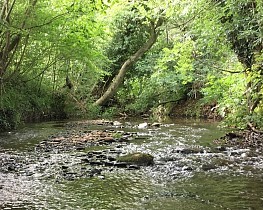 Chanstone Court - DG from Hereford
Chanstone Court - DG from Hereford 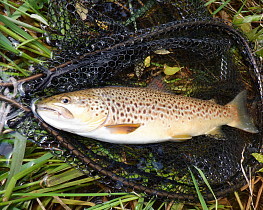 Upper Wye trout - Dave Collins
Upper Wye trout - Dave Collins RB from Redditch scored again on the 17th, taking 15 trout and 8 grayling from the Rectory. SW from London had 10 trout from Dinas, mostly on nymphs. DR from Bristol caught 8 trout and 3 grayling to 16 inches from the Irfon at Cefnllysgwynne. Dave Collins from W Herefordshire was on the upper Wye below Llanwrtwl, where he took 3 trout and 9 grayling to 16 inches on nymphs. During a strong olive hatch JD from Hereford fished at Llangoed and Lower Llanstephan for 1 trout and 12 grayling to 14 inches on nymphs. IG from Pontypridd with a friend fished the Usk at Abercynrig on the 19th for a dozen trout during the evening. Apart from observing an otter, he had some interesting points to make. One was that the marked fording place is not viable, even in low water. I think that is correct; the old ford at the bottom end is long gone and it might be more than your life is worth to try it in high water. If you want to cross, use the top pool of the beat below the Cynrig junction. IG also complained that there is a lack of fishable water on this beat. I find that quite surprising, but his view was very definite: “enough for one angler for one evening,” but not more. And why cannot it be combined with Dinas, he wanted to know? Why not indeed, IG? That is just how it used to be, and Dinas and Abercynrig was a great Usk beat to divide between several anglers, albeit rather expensive by local standards.
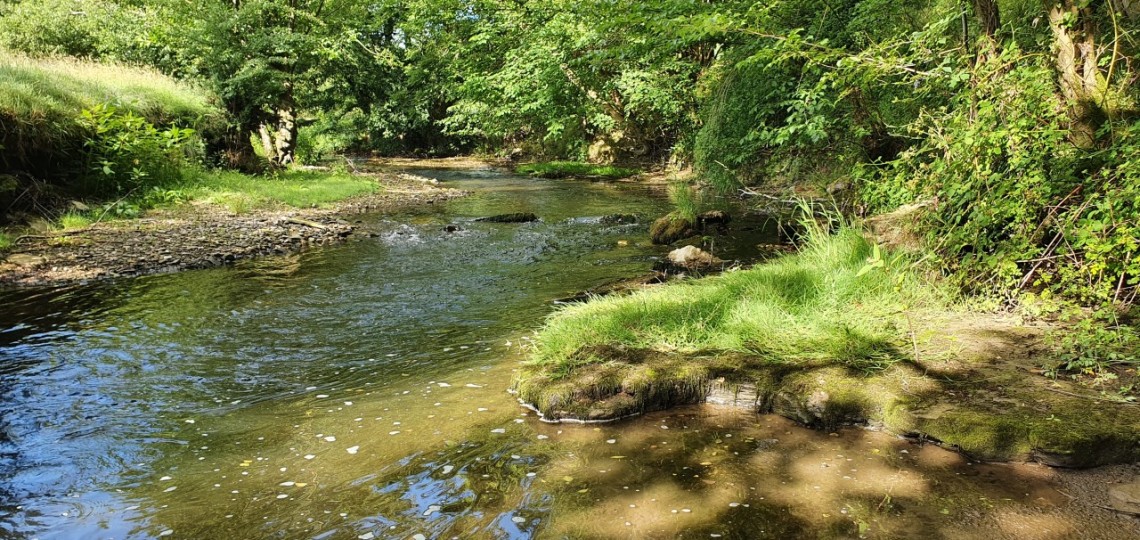 Titley Arrow - LH from Hereford
Titley Arrow - LH from Hereford Meanwhile SW from Swansea had 8 trout on nymphs from the Irfon at Cefnllysgwynne and KL from Bristol reported 4 trout and 15 grayling from the Lugg at Dayhouse. On the 21st RB from Redditch caught 6 trout and 11 grayling from the Rectory beat of the upper Wye. In the western mountains TR from St Clears caught just the one trout from Llyn Egnant with a Damsel Nymph. However, this was a fish of 2 pounds which is good going for a wild mountain lake. DO from Bath while fishing at Dinas encountered young poachers spinning, although the report doesn’t make clear what action was taken. Dinas and Abercynrig on the Usk both suffer from proximity to Brecon town and easy access from the dual carriageway. The Breconshire Town water itself is quite well bailiffed, but neighbouring Dinas tends to present itself as an easier option for those who don’t want to pay for their fishing. On the 24th SC from Llandeilo Graban was scratching for results from the Irfon at Aberbwtran when he came across a pod of grayling in a gutter. Using nymphs he caught 6 to 15 inches and was broken off by a larger fish. PB from Leominster caught 10 upper Wye trout from the Rectory beat. On the 26th JA from Leominster had 8 trout from the upper Lugg at Litton. JD from Bromyard recorded a modest bag of 5 trout from Abernant, but had an interesting experience towards dusk. Seeing what appeared to be a predator attack on minnows in the shallows he deployed a streamer for the first time that day and was rewarded with a hard-fighting 16 inch trout. DR from Bristol fished the upper Usk at Cefn Rhosan Fawr on the 28th and caught a dozen trout to 15 inches on nymphs. And TD from Pontypridd recorded a blank on Usk Reservoir, but he then did something very Welsh and sent in his catch return in verse. I will reproduce it because I think it’s the first time we ever received a poem, from the Land of Song or anywhere else:
I fished with spinner and float to no avail
A silver bar the holy grail
Alas it was not meant to be
So off I went - home for tea
Recharged I returned to try once more
A bright shiny spinner they can’t ignore
A take, a bite, a fish on my line
It’s on, its off, take that as a sign
A blank recorded, no trout for dinner
At least that sunset was a winner
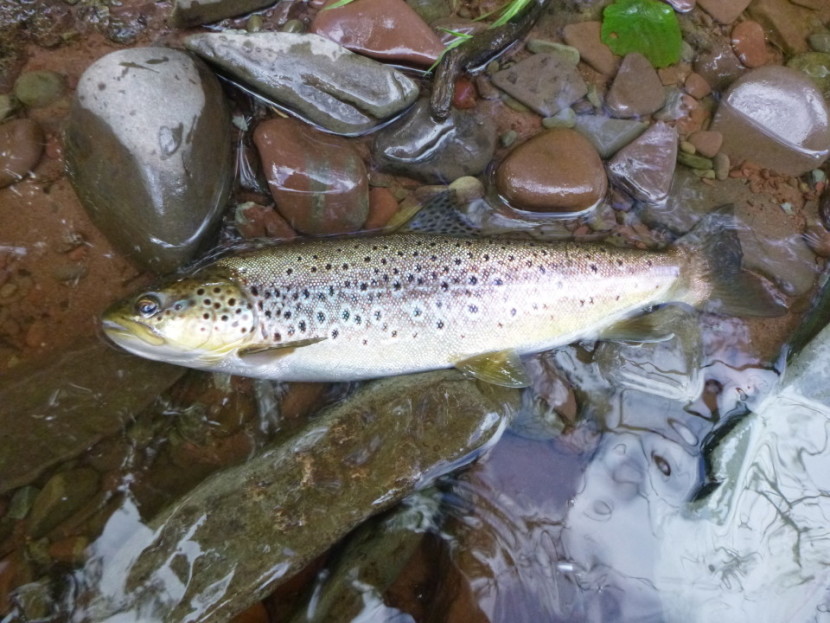 Pantycallog trout - DR from Bristol
Pantycallog trout - DR from Bristol 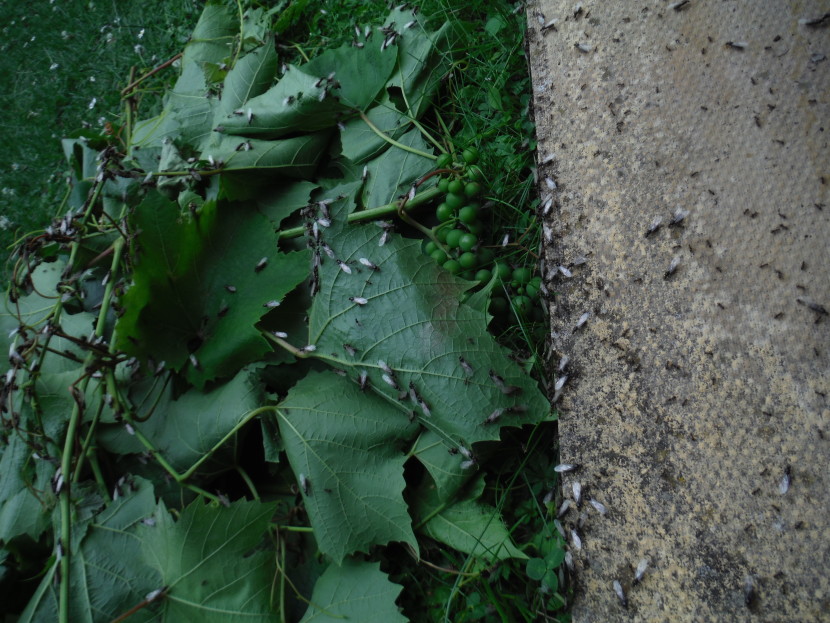 Flying ants
Flying ants Just like July last year, one sultry day this month we had a sudden eruption of flying ants – nowhere near the river, but coming from under a slab of concrete on our garden path. I looked up and the birds were already aware, hundreds of them circling overhead, mostly sea gulls but with a few opportunistic rooks amongst them. It’s quite a juicy thing, a flying ant when you look at it closely. Peter Major, keeper at Heale near Salisbury, told me he saw the same phenomenon on their estate on the same day.
We finished July with a mini-heatwave. By the end of the month I had the impression that while salmon had spread well up into our rivers at last, overall numbers were low. Fresh salmon were arriving at the bottom of the Wye on most tides, but upstream we had to be content with jaded residents. Rivers further west seemed to have more salmon than sewin.
Access to newly opened fishing in Wales was very welcome, but I have to remark that, just as in England, a surprising number of Welsh businesses seemed not that keen to re-open. Several times I heard: “There isn’t that much money to be made with social distancing, so might as well stay closed for now. It’s still early days.” This makes a big difference for my clients from England who want to stay over as well as fish. Activity on the English side is still noticeably reduced. Lately I have taken to driving to the upper Wye via Hereford and the north side of the Black Mountains, rather than my usual route via Crickhowell and the southern side. The mileage is about the same, but the rush hour and crawling traffic in Hereford normally rules out the northern route. Now I drive straight through because there is no rush hour in Hereford. I presume everybody is working from home; certainly lots of shops seem to be locked. I’m sure one conclusion we will draw when the epidemic and lockdown measures are finally over, is that it is easy enough to switch off the engine of the economy, but a lot harder to start it up again.
Reports of poaching and other anti-social behaviour continued. As an example of just unpleasant the poaching problem can become, the Caerphilly Angling Club put out the following statement accompanied by photographs of dead sea-trout entangled in a gill net: “An incident occurred yesterday evening when a group of males were caught using a gill net in the River Rhymney at Draethen. When approached by our bailiffs these individuals became aggressive, brandishing a large knife, threatening to use an air rifle and throwing rocks. They have now been arrested by the police and the NRW are also pressing charges…” Further news came that on the 16th July police and NRW officers carrying prepared warrants made joint raids on 7 properties in the Cardigan area in relation to alleged poaching offences on the Teifi supposedly involving literally tons of salmon and sea trout. A number of people are being interviewed. Good for the police and good for NRW, say I. That is after all what we pay them for.
The other day I received a request to review the mayfly season just past. Some people found it rather disappointing; others seem to have had a great time. I’m inclined to conclude it was a slightly unusual one this year, but not a bad one in the circumstances. The timing was certainly different. Normally I would expect the mayfly in our area for the last week of May and the first two weeks of June, with the odd straggler continuing to emerge until the end of the season. This year I first saw the mayfly in numbers on 13th May while I was salmon fishing on the lower Wye, and friends living by the Monnow told me they were seeing the big fly for a few days even before that. So the hatches began from one to two weeks early and I assume this can be assigned to the record warm spring we experienced. The spring was not only warm, it was extremely sunny and dry and the showers ending the drought did not begin until the mayfly was over. As a result, during those critical mayfly weeks the tributaries were not in their best condition, very low and the beds covered with slime.
Then we had the unusual conditions caused by the pandemic lockdown and unavailability of Welsh streams even after the English ones opened. As a result, only local anglers had access to excellent mayfly waters like the Llynfi and Llynfi Dulas, and at the moment I have no information about what was achieved there. I did hear about some mayfly catches on the Usk, not normally renowned as a mayfly river. The North Herefordshire streams, Lugg and Arrow, certainly produced some good days but were inevitably overfished due to lack of availability of other waters. That was probably also true of the tiny Forest of Dean streams. Up in Shropshire the Teme was also experiencing its first fish rescue this year by the EA due to lack of water flow, although a few good trout were caught at Bucknell before it dried up.
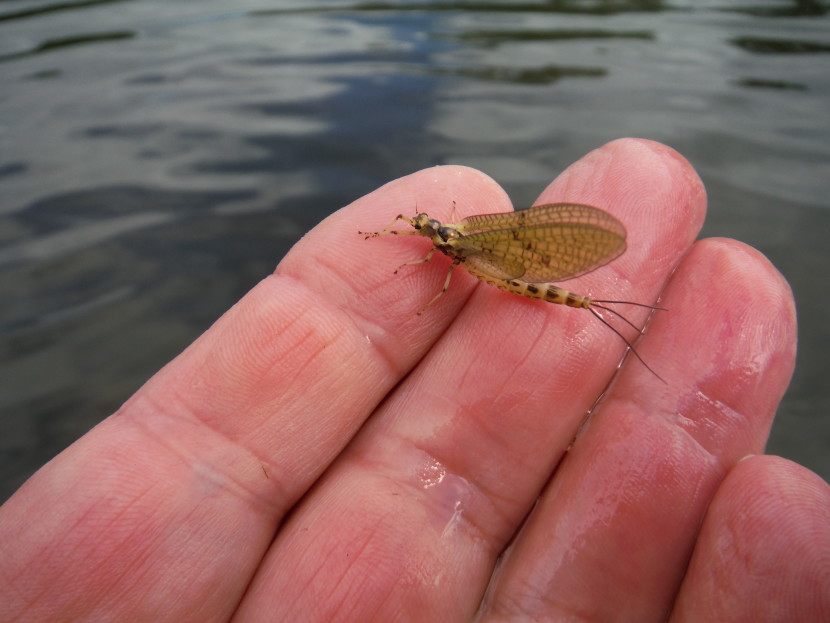 Early mayfly on the Lower Wye
Early mayfly on the Lower Wye 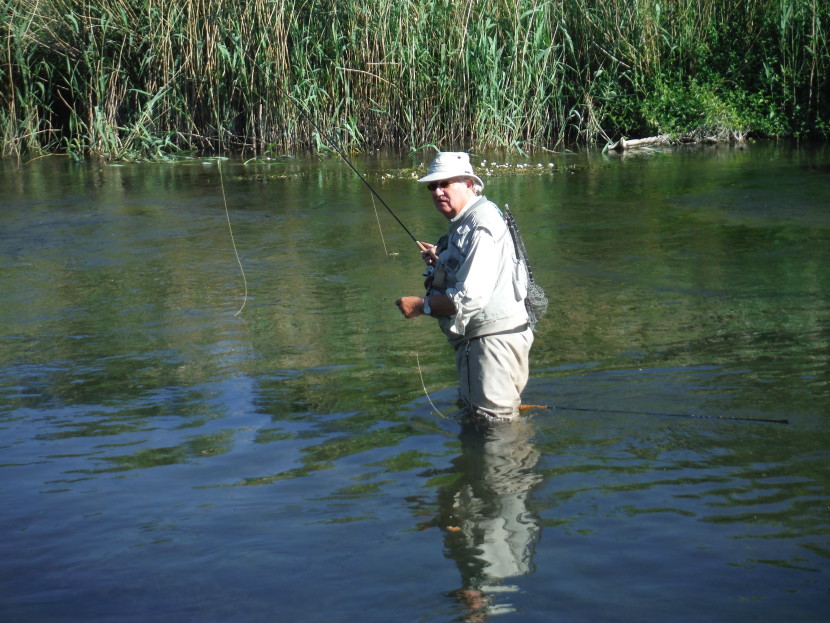 Did I miss him - Salisbury Avon
Did I miss him - Salisbury Avon There were reports of good days elsewhere. I had some enjoyable fishing on the Monnow, the Escley Brook and the Arrow. By the 10th June the hatch had already dwindled to just the occasional late individual seen emerging, although trout had become accustomed to taking a big fly and prospecting with a large artificial usually worked. So that just as the 2020 season had begun early, it finished early. About this time I did my regular invertebrate survey in the Bideford Brook and found plenty of immature mayfly nymphs in the tray. These were the smaller larvae which will grow on to hatch next year and their numbers caused me no concern.
Over on the Salisbury Avon, which is very much a mayfly river, David Burren and I had a day at Heale on 2nd June. We had been told that there had been dramatic mayfly hatches every evening, some of the best which anybody on the river could remember. Fish were lying relatively quiet on the bottom by day, supposedly having gorged themselves at the previous dinner time. Far from home as we were, a late evening session didn’t really suit us, but we fished on through the day anyway and by prospecting with large flies (I used a size 10 Monnow Gosling throughout), succeeded in bringing fish up. We earned more than 20 trout between us, including a pair of big ones. Keeper Peter Major told me then he had a theory that this year the mayfly hatch would end suddenly, rather than continue in trickles even to the season’s end as usually happens on the Avon. Meanwhile, anglers were enjoying themselves. One of Peter’s regulars actually fishes the evening rise here and then heads straight back to his home on the Isle of Wight, having a ticket booked for the last ferry.
The interesting difference between the Avon and our rain-fed rivers here on the Welsh border, was that this spring the former still had a powerful flow while the latter were shrunken with drought. On that early June day the Avon had as much strength as I can remember, with all the hatches open and running hard, the ribbon weeds flattened down to the river bed and even a blackish tinge to the water. Peter was enthusiastic about last winter’s heavy rainfall: “It just kept coming, topping up the aquifers every week. That winter has given me enough water to last all season.” Some say the Avon is not a “pure” chalk stream as one branch of it comes off greensand, but there is certainly enough chalk in the Avon catchment to provide a massive reservoir to filter fresh water into the river for many months. For us on the Wye and Usk, that winter rain ran straight to the sea in floods, after which it stopped raining and before you knew it we had a spring drought.
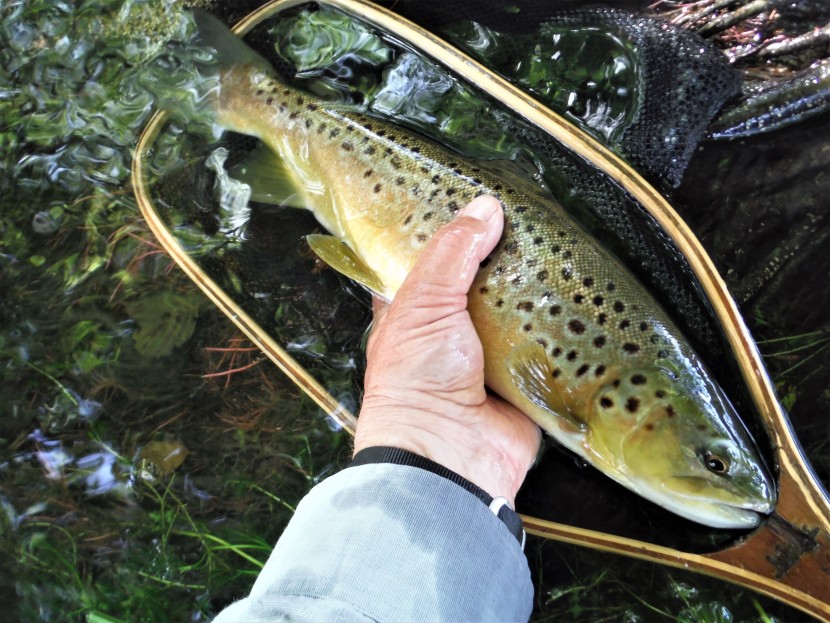 Salisbury Avon mayfly trout
Salisbury Avon mayfly trout 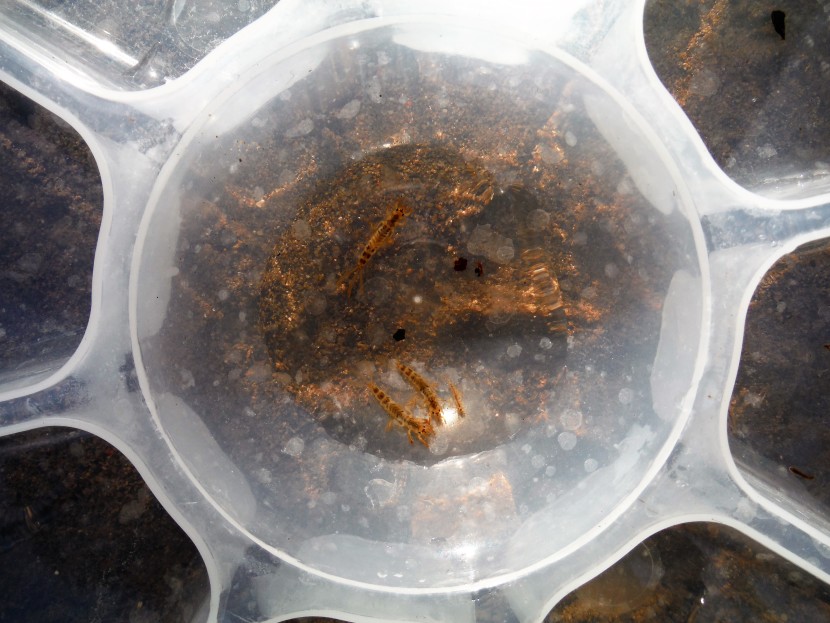 Mayfly nymphs
Mayfly nymphs David and I had another Heale day in mid-July and it seemed Peter was largely right. The current had slackened a bit over the shallows, but there was plenty of water still there. By decision of the EA due to the epidemic, there has been no weed cut this year. The weed here is amazing stuff, absolutely full of shrimp. The weather was hot and bright, the mayfly was more or less finished and the talk now was about fishing sedge patterns late in the evenings. I did see a few mayfly duns and took a couple of fish with the Gosling, but many more refused it. We watched several trout in succession attacking a blue damsel adult on the surface, crippling it but for some reason failing to take it entirely. Little pale wateries became the main interest of fish during the later afternoon and nothing more complicated than a size 18 Grey Duster from my grayling box was enough to provoke confident takes. David did equally well with a more accurate pale watery imitation.
Anglers have a myriad of artificial patterns to choose from at mayfly time. This year I used three, and more for the sake of a change than anything else. The Monnow Gosling has been my mainstay for a long time and I find that if trout are prepared to take a large fly at all, they will usually take this one. Come to think of it, chub and dace take it also. I fish it in long shank size 12 or size 10, depending on just how large I want it to look. This is one of those patterns which combine a long straggly head hackle (a couple of turns of partridge in this case) with a stiff palmered body hackle. This combination always seems to be a good idea, as with the Jingler and the Dai Lewis March Brown.
When making the tail, don’t be afraid to take a big bunch of stiff ginger cock hackle fibres, much bigger than you perceive a real mayfly tail to be. In fact it isn’t the tail you are trying to imitate, but the empty shuck which the fly is emerging from. Take a look at one of these empty skins as they float past in the surface film; they are quite bulky objects.
Hook: 10/12 Kamasan B400 dry fly
Thread: brown
Tail: Bunch of long ginger cock hackle fibres
Rib: Fine gold wire
Body: Pale hare’s fur
Body hackle: Palmered ginger cock
Head hackle: 2 turns brown partridge
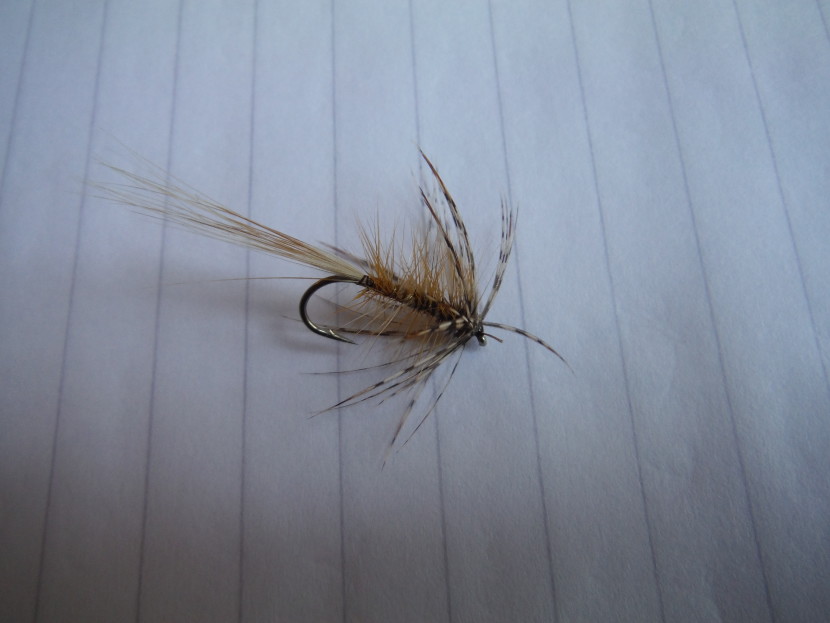 Monnow Gosling
Monnow Gosling My second pattern used was Mike Weaver’s Hackle Mayfly, which has been in my box for many years – it was in fact my regular mayfly before the Monnow Gosling. The charm of this is in the mixed hackles, which combine grizzle with olive green and orange wound through each other. You can find all those colours in a real mayfly. By experimenting with hackles you can come up with some amazing effects, but a rough formula to start off is to emphasize the grizzle most and the orange least. Five turns of grizzle followed by three of olive and one or two of orange should be about right. On the Hackle Mayfly you do imitate the real tail, but I would not be so precious as to put on exactly three pheasant tail fibres. Put on four or five because some are bound to get lost in service!
Hook: 10 to 12 Kamasan B400
Tail: 4/5 cock pheasant tail fibres
Body: Yellow/olive synthetic dubbing
Hackles: One grizzle, one olive, one orange wound through each other
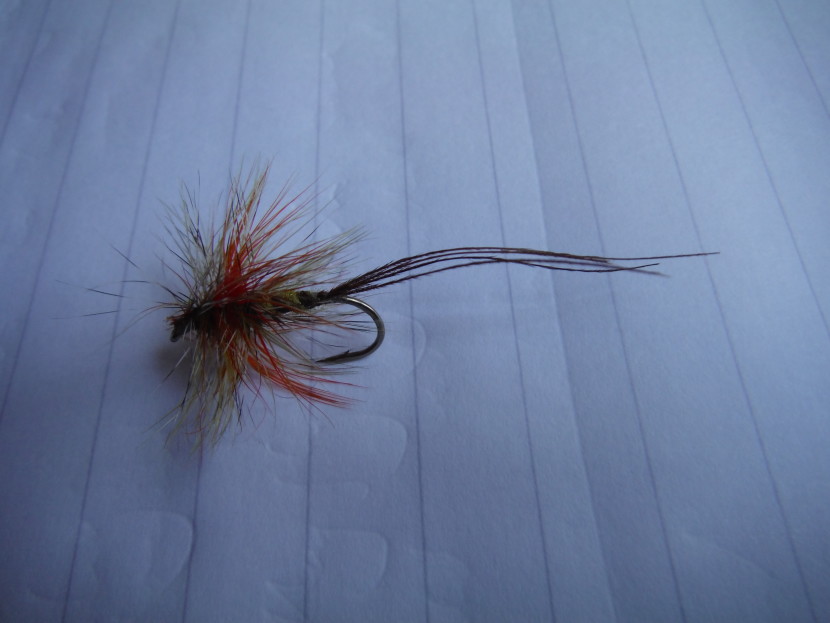 Mike Weaver's Hackle Mayfly
Mike Weaver's Hackle Mayfly The third one is called the Compara DHE and I got this recently from an article by Rob Denson in the June edition of Trout and Salmon. It’s a minimalist pattern and like all the Deer Hair Emerger family it mainly imitates the emerging wing, a tangle of legs on the way out of the shuck, and just a bit of the body hanging below the surface. Don’t bother with a tail. Denson’s version for the mayfly is coloured from olive to golden olive, but as I happened to have a patch of roe deer hair dyed bright yellow, I used that to produce something rather more colourful. It looked right and several good Monnow trout fell for it.
Hook: 8 to 10 Kamasan B100
Thread: Olive
Rib: Tying thread or fine gold wire
Body: 50/50 olive hare’s ear and golden olive seal’s fur
Wing: natural or dyed olive (golden olive) roe deer hair
Incidentally, I don’t, these days, carry a specific spent spinner imitation for the rivers I fish. If you arrive late to find trout gently sipping spinners as they drift downstream, you can usually make do with either a Gosling or a Hackle Mayfly trimmed top and bottom so it sits flat in the film. In fact a Monnow Gosling will tend to sit in the film anyway if you don’t overdo the grease. All these ideas can be mulled over between now and May 2021. I only hope that we will not by then be fishing in face masks and that by then it will be OK to shake a fellow angler’s hand!
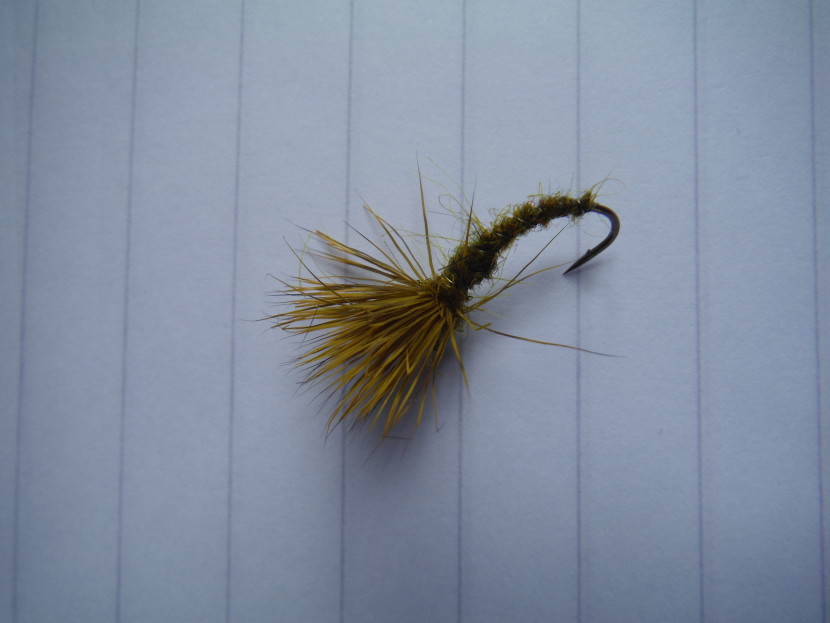 Compara DHE
Compara DHE Somebody wrote in to ask about the lines of WB Yeats quoted by my sister (June newsletter). They are from his poem “The Second Coming,” written almost exactly a century ago in 1919. You can look up the full poem on the internet. The second coming which Yeats envisaged would be nothing like the first. For Yeats it was a matter of “who is this who is coming,” or more certainly perhaps, “something wicked this way comes.” He wrote it when he must have been desperately worried about his pregnant wife, who was suffering from Spanish flu, and while civil war was looming close in Ireland. It is a very dark and disturbing poem, written in another time of disease and discord.
On a more cheerful note, the other night I watched Pond Life, director Bill Buckhurst’s 2018 film version of a 30 year-old play by Richard Cameron. This is one of those independent British productions and a rather affectionate rites of passage drama depicting children and youths in a South Yorkshire pit village during the early 90s. If I wanted to be cynical I could describe it as Billy Elliot meets Gregory’s Girl and I appreciate that it might not be everybody’s cup of tea. On the other hand I liked it, for similar reasons to my appreciation for the two more famous films. The characters, who become steadily more interesting as the film develops, live on a sink estate. They all have their troubles, but a saving grace is the unexpected beauty of the landscape beyond the estate and the freedom for children to wander in it. Angling in a flooded and overgrown brick pit is a thread that runs through their lives and the film. In somebody’s back yard there is a glorious wooden shed filled up with tackle and with a copy of Mr Crabtree Goes Fishing on a shelf, there is the adventure of night fishing and – wonder of wonders – the capture of a large carp in darkness. It becomes apparent at different moments that most of the actors don’t fish, but I believe that Mr Buckhurst fishes and disbelief can always be suspended.
At the moment of capture, the children show a perfectly appropriate reverence and appreciation for what will surely become a life-long memory to each of them and there is a touching anxiety to get the carp back into the water. Nobody takes a photograph and nobody wants to weigh the fish to see whether it is 18 pounds or 20. In fact the capture becomes a magic moment for young lives otherwise affected by great uncertainty. I don’t suppose this is the kind of film which will ever be commercial, but I would recommend it if it comes your way. I can remember a similar brick pit, surrounded by steep woods and deep and dangerous as I recall, but we rowdy kids scrambled and shouted all around it and threw in lines to watch bobbing floats. All we ever caught at Normandy Brick Pits were small perch and skimmer bream. At Buckland there was a flooded chalk pit under the downs by an old fullers’ earth works. This had several giant carp gliding in its transparent depths and pike too; we never caught any of these monsters because we had no idea how to go about it, but we stared at them for hours.
August is not usually known as our best fishing month, but this is a strange year and I won’t predict what will happen. If it turns out very hot and bright, give some thought to our tree-shaded tributaries, fishing evenings, and maybe trying high mountain lakes if there is any kind of breeze.
Tight lines!
Oliver Burch
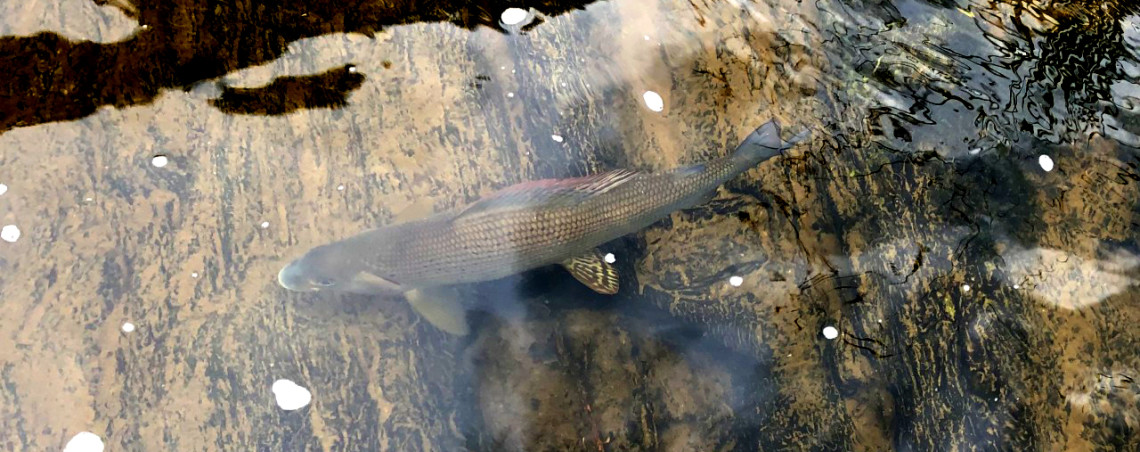 Craig Llyn grayling - RC from Bristol
Craig Llyn grayling - RC from Bristol